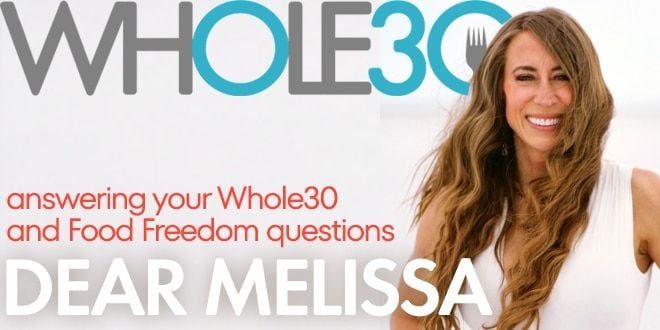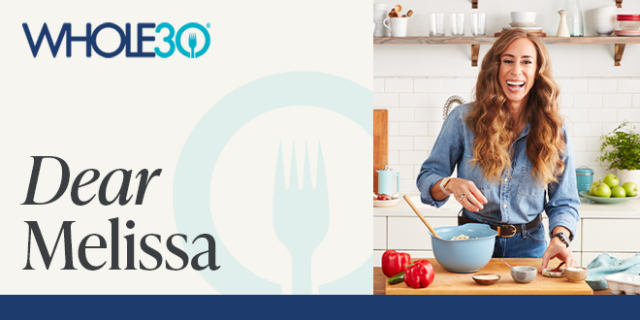Beginning the Whole30 can feel exciting and intimidating, especially if you’re new to cooking. While there are thousands of Whole30 recipes available online, on our Instagram feed, and in one of our five Whole30 cookbooks, we may use ingredients you aren’t familiar with or don’t have in your pantry. But buying new cooking oils, spices, and other pantry staples can be expensive! How do you know what ingredients are Whole30 essentials that will make the most difference in your cooking during your 30-day elimination?
That’s where Real Plans comes in. Real Plans is our official Whole30 meal planning app, allowing you to plan a month’s worth of Whole30 meals in just five minutes—right down to an automated shopping list and Instacart integration. With nearly 1,000 Whole30-compatible recipes in its database, Real Plans has meals for everyone, and lets you customize your recipes to your needs with the click of a button. So it’s simple to get what you need, whether you’re allergic to eggs, don’t eat red meat, or really hate mushrooms.
We analyzed data from 830 Original Whole30 recipes in the Real Plans database to determine the ingredients most commonly used in a Whole30 meal, from cashews to olive oil, garlic powder to apple cider vinegar, paprika to Dijon mustard. We filtered out proteins (like eggs or chicken), vegetables, and fruits; and also eliminated ingredients and pantry staples you’re certain to have on hand, like salt, garlic powder, and balsamic vinegar. Then, we analyzed the remaining data to create a list of Whole30 essential ingredients that frequently appear in those recipes, so you can target your grocery shopping to the items you’re the most likely to use during your 30-day elimination.
Add these 7 pantry staple ingredients to your Original Whole30 shopping list
Extra-virgin olive oil: This ingredient came up the most often, specifically mentioned in 38% of Whole30 recipes found in Real Plans. Extra-virgin olive oil (EVOO) is a powerhouse pantry staple for cooking and making dressings and sauces. It’s rich in heart-healthy monounsaturated fats and antioxidants, and it’s good for sauteing, pan-frying, and roasting.
Alternative: You can use any compatible cooking oil you have on hand during your Whole30 (like ghee, coconut oil, avocado oil, or canola), but canola or safflower oils don’t impart the same rich flavor into dressings and sauces that EVOO will. Look for Whole30 Approved brands of EVOO like Primal Kitchen or OLEAMEA.
Ground cumin: This Whole30 essential spice came up more often in recipes than any other, except garlic powder. Cumin is a spice commonly used in Latin American, Middle Eastern, North African, and Indian cuisines, among many others. And it’s used in many spice blends (like curry powder, garam masala, and chili blends) and in rubs and marinades. A little goes a long way, so you’ll usually see just small amounts of cumin in recipes.
Alternative: If you don’t have ground cumin, peek at your chili powder or curry powders—they are likely to contain cumin, and may work in a pinch in recipes. Just check your labels for added sugar or other incompatible ingredients.
Coconut aminos: You’ve probably got soy sauce in your fridge, but not even the low-sodium stuff works for the Original Whole30, as that program eliminates all forms of soy for 30 days. Thank goodness for coconut aminos, a soy sauce substitute made from the fermented sap of the coconut palm tree. Aminos are easy to find at nearly every grocery store and online, and offer a surprisingly similar, naturally sweet alternative to soy sauce for sauces, recipes, and dipping. Look for Whole30 Approved brands like Coconut Secret, Big Tree Farms, and Thrive Market.
Alternative: If you can’t find coconut aminos, you can try a mix of balsamic vinegar, Red Boat fish sauce, and Whole30-compatible beef broth to derive a close-ish match… but you may just want to skip recipes that use aminos until you can get your hands on some of this pantry staple. The flavor profile is hard to match, and many dishes just won’t taste the same if you leave them out.
Ghee: In the earliest days of Whole30, store-bought ghee (a form of clarified butter) didn’t exist—you had to make yourself. Today, you can find ghee in nearly every grocery store and online. Ghee, which originated in India, is a Whole30 essential that’s made when butter is cooked over low heat until the milk solids lightly brown, creating a slightly nutty, caramelized flavor. It is shelf-stable with a high smoke point, which makes it ideal for cooking, even on high heat. Look for it in the baking aisle with the other cooking oils, not in the fridge, from Whole30 Approved brands like Pure Indian Foods, Fourth & Heart, and Tin Star.
Alternative: You can easily clarify your own butter at home. Melt a pound of unsalted butter on low heat. Once it’s melted, the hazy milk solids will start to separate from the clear fat. Strain the melted butter through cheesecloth into a sealable glass jar; the milk solids will remain in the cheesecloth (and can be discarded), and you’ll be left with clear, pure clarified butter.
Mayo: You’ll use mayo a lot on the Whole30; in sauces and dressings, to coat a chicken breast before “breading” it in almond flour, and to layer into your lettuce wraps and over your bunless burgers. Most store-bought brands of mayo won’t be compatible (they almost all contain added sugar), but Primal Kitchen makes a delicious Whole30 Approved version that even comes in varieties like Chipotle Lime, Pesto, or Garlic Aioli—and you can find the brand anywhere you shop.
Alternative: Making your own mayo is deceptively easy, and very cost-effective. It requires just five ingredients, a blender or food processor, and about three minutes; find our fool-proof recipe here.
Full-fat coconut milk: Unlike the almond, soy, or coconut milk blends you find in the dairy case (which are thin in texture and low in fat), coconut milk in a can offers a rich, creamy alternative to dairy in recipes, soups, or sauces. You can find cans of this Whole30 essential in the Asian section of your local grocery store. Look for coconut milk, water, and perhaps guar gum as the only ingredients. (Avoid anything labeled “light,” as the fat content is what makes this such a great dairy replacement.)
Alternative: If you’re allergic to coconut but can consume other forms of non-dairy milk, you can use unsweetened almond, cashew, or macadamia milk in recipes. (Just note that your dishes or sauces may come out thinner and less creamy.)
Almond flour: You won’t be using flour to thicken your meatballs or to coat your chicken breast, but almond flour makes a great replacement in your Whole30 recipes. (Just remember, you’re not using it for baked goods while in your Whole30 elimination phase.) Almond flour consists of almonds ground finely, to form a flour-like consistency. You can find the pantry staple in the baking aisle or online, sometimes called “almond meal” (which just means the whole almonds, skin and all, have been used).
Alternative: Grain-free flours like almond, cassava, coconut, or potato aren’t a one-to-one replacement in recipes, as they all absorb liquids differently. Coconut flour, for example, is far more drying than almond flour, and can ruin a recipe if you try to sub it in. Cassava flour is probably the closest to a 1:1 substitution, but you’re better off looking for a recipe that specifically calls for a flour other than almond if you don’t have it on hand. And remember, gluten-free flour blends that include oat flour or rice flour are not compatible with the Whole30.
Plan 30 days of Whole30 meals in five minutes flat
As you browse through the huge assortment of Whole30 recipes in Real Plans, you may see other unfamiliar ingredients in your Whole30 recipes, like tahini (a paste made from sunflower seeds), ground turmeric (a golden-colored spice commonly used in Indian and South Asian cuisine), or arrowroot (a powder used in small quantities to thicken a sauce or stew).
However, you don’t have to stock your pantry all at once! By prioritizing our seven most popular ingredients according to the data, you’ll likely have everything you need to cook most of the Whole30 recipes in your meal plan. You can then add to your collection of Whole30 pantry staple ingredients as you go, picking up something new (like almond butter or garam masala) when you discover a recipe that looks too tasty to pass up.
Disclaimer: This page contains affiliate links. We earn a small commission when you purchase through these links.















